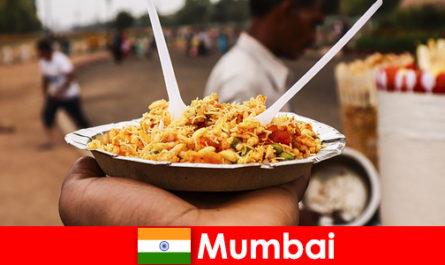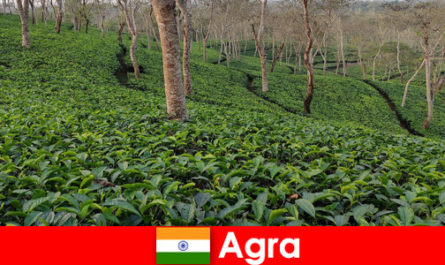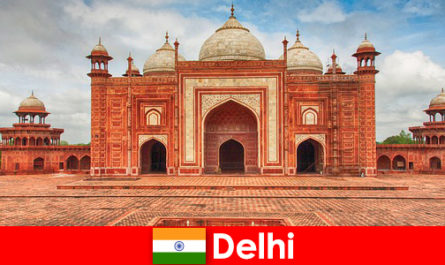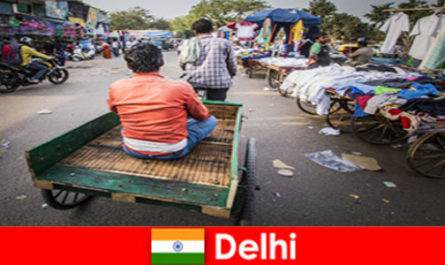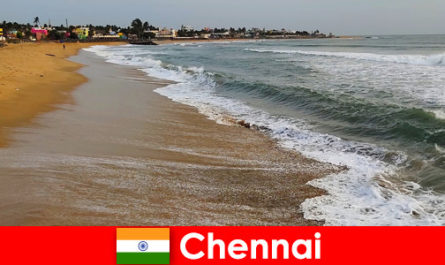Delhi is not just any city, but the capital of India. There are actually three cities that make up the National Capital Territory and that are collectively regarded as the metropolis: Delhi, the old city of the Mughals, New Delhi, created by the British in 1920, and Cantonment, which has existed since 1914. The capital presents itself to vacationers with a multitude of impressive sights. Centuries-old buildings alternate with modern buildings, each one a beauty in itself.
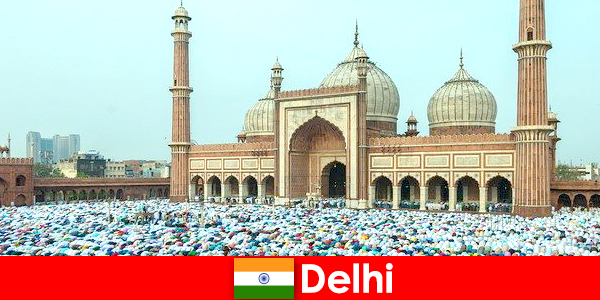
Experience India – a sight in and around the capital of India
The metropolis on the banks of the Yamuna River is a true treasure chest full of culture and history.
One of the most beautiful sights is the Jama Masjid Mosque, the Friday Mosque. The name means “mosque that looks out over the world”. The name fits very well, because the building, built in the 17th century, is one of the largest mosques in the world. The mosque was built mostly from red sandstone. White and black marble were used only for parts of the towers and for the magnificent domes. The large courtyard that surrounds the imposing mosque offers space for more than 20,000 believers.
A breathtakingly beautiful building of recent times is the Lotus Temple. The delicate, white tips of the lotus flower point to the sky as visitors from all over the world enter the building under the sloping flower petals. Fariborz Sahba, an Iranian-Canadian architect, was commissioned to design and build the Bahai Temple in 1976. The lotus temple is not only special because of its shape, but like all Baha’i temples it is open to all religions.
The holy scriptures of each religion are quoted in the temple in the respective language and usually accompanied by a choir. A total of nine gates lead into the temple, which according to Baha’i faith symbolizes religious openness. The lotus temple is absolutely worth seeing and over the years the building has already won several architecture prizes.
Mohandas Karamchand Gandhi – Raj Ghat
One of the most important memorials is the Raj Ghat, which was built in 1951 in memory of the great Mohandas Karamchand Gandhi. The burial site is just above the spot where Mahatma Gandhi’s body was cremated in 1948.
The tomb is embedded in a beautiful park with further memories and consists of a black marble slab, an eternal flame and Mahatma Gandhi’s last words – “He Rama – oh God”.
India – buildings of the past
The gleaming golden domes of the Gurudwara-Bangla-Sahib-Temple shine towards the visitor from a distance. This magnificent building is the largest Sikh sanctuary in the country and was built in the 18th century. A huge expanse of water, the “holy pond”, lies directly in front of the temple and is surrounded by side buildings, paths and walls. The water of the pond is very often taken home by believers because it is said to have healing properties. In addition to the temple, there is an art gallery, school, and huge kitchen on the property. This kitchen is well worth a visit. Every day, more than 10,000 people are provided with food here – financed by donations. No matter what religion, no matter whether homeless, poor or rich – every visitor to this kitchen is warmly welcomed and invited to eat.
The most beautiful park in India – the Lodi Gardens – measures 360,000 square meters. Here, in a wonderfully quiet and well-kept environment with many water points, bridges, trees and flowers, the visitor will also find some imposing mausoleums and other beautiful domed buildings. The park is often used by the Indians for walks and is a place for relaxation and meditation.
 Dansk
Dansk Deutsch
Deutsch Español
Español Français
Français Indonesia
Indonesia Italiano
Italiano Magyar
Magyar Melayu
Melayu Nederlands
Nederlands Polski
Polski Português
Português Русский
Русский Română
Română Tiếng Việt
Tiếng Việt Türkçe
Türkçe Українська
Українська български
български Ελληνικα
Ελληνικα 한국어
한국어 हिन्दी
हिन्दी 日本語
日本語 简体中文
简体中文
